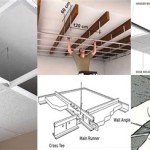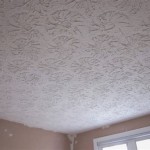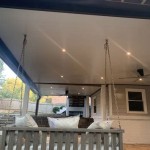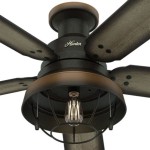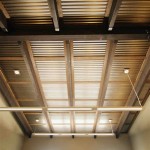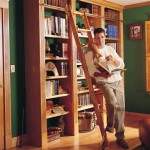Awesome Ceiling Fans to Keep You Cool in Summer and Warm in Winter in Oregon
Oregon, with its diverse climate, presents unique challenges and opportunities for home comfort. From the hot, dry summers east of the Cascades to the damp, cool winters along the coast, maintaining a comfortable indoor temperature year-round requires a versatile approach. Ceiling fans offer an energy-efficient and effective solution, providing both cooling relief in the summer and assisting with heating distribution during the winter months. In Oregon, selecting the right ceiling fan involves considering factors like room size, ceiling height, style preferences, and energy efficiency to maximize its benefits throughout the year.
This article explores the features and benefits of various ceiling fan models suitable for Oregon homes. It delves into key considerations for choosing the best fan, including blade size, motor type, control options, and energy-saving features. It also addresses the importance of professional installation to ensure optimal performance and safety. Furthermore, the discussion will cover how to leverage ceiling fans to reduce energy consumption and improve overall home comfort in Oregon's distinct climate zones.
Understanding the Benefits of Ceiling Fans in Oregon's Climate
Ceiling fans are more than just decorative fixtures; they are practical tools for managing indoor temperatures. In the summer, a ceiling fan creates a downdraft, circulating air and creating a cooling breeze. This evaporative cooling effect makes occupants feel several degrees cooler, allowing for a higher thermostat setting and reduced air conditioning usage. The savings can be especially significant during Oregon's hotter months, contributing to lower energy bills. The perceived temperature drop is a key benefit, allowing residents to remain comfortable without relying solely on air conditioning.
During the winter, ceiling fans can reverse direction to create an updraft. This gentle upward movement of air pushes warm air, which naturally rises to the ceiling, back down into the living space. This process of destratification reduces the temperature difference between the ceiling and the floor, making the room feel warmer and more comfortable. By distributing heat more evenly, ceiling fans reduce the workload on the heating system, leading to lower heating costs during Oregon's colder months. This is particularly beneficial in rooms with high ceilings, where warm air tends to accumulate at the top.
Beyond temperature regulation, ceiling fans contribute to improved air circulation year-round. This helps to reduce stale air, minimize humidity, and prevent the growth of mold and mildew, especially in Oregon's wetter regions. Better air circulation can also help to distribute fresh air from open windows, improving indoor air quality. This is especially relevant for residents concerned about allergies and respiratory health.
Furthermore, ceiling fans offer an aesthetically pleasing addition to any room. With a wide variety of styles, finishes, and blade designs available, it is possible to find a ceiling fan that complements any décor. From traditional to modern, there is a ceiling fan to suit every taste and budget. The aesthetic appeal of a ceiling fan can enhance the overall ambiance of a room while providing functional benefits.
Key Considerations When Choosing a Ceiling Fan for Your Oregon Home
Selecting the right ceiling fan involves several important considerations. The size of the room is a primary factor, as it determines the appropriate blade span. Smaller rooms, typically under 75 square feet, require fans with a blade span of 36 inches or less. Medium-sized rooms, ranging from 75 to 175 square feet, benefit from fans with a blade span of 42 to 48 inches. Larger rooms, exceeding 175 square feet, need fans with a blade span of 52 inches or greater. Open floor plans may require multiple fans or larger models to ensure adequate air circulation.
Ceiling height is another crucial consideration. For ceilings less than 8 feet high, a flush-mount fan is recommended to ensure adequate clearance. For ceilings between 8 and 9 feet, a downrod of 6 to 12 inches is typically appropriate. For ceilings taller than 9 feet, a longer downrod is necessary to position the fan blades at the optimal height for air circulation, generally 8 to 9 feet above the floor. Using the correct downrod length ensures efficient airflow and prevents the fan from being too close to the ceiling or the occupants.
Motor type significantly impacts fan performance and energy efficiency. DC (direct current) motors are generally quieter and more energy-efficient than AC (alternating current) motors. While DC motors may be more expensive upfront, they offer long-term savings on energy bills and provide smoother, more precise speed control. The greater torque of DC motors also allows for more powerful airflow at lower speeds, making them ideal for both cooling and heating applications. AC motors, while less expensive, tend to be louder and less energy-efficient, but they remain a viable option for budget-conscious consumers.
Control options are another important factor to consider. Basic ceiling fans typically have pull chains for controlling the fan speed and light. More advanced models offer remote controls, wall controls, or even smart home integration. Remote controls provide convenience and allow adjustments from anywhere in the room. Wall controls offer a more permanent and accessible option. Smart home integration allows for automated control through smartphone apps or voice assistants, enabling features like scheduling, temperature-based adjustments, and remote operation. The choice of control option depends on individual preferences and the level of convenience desired.
Energy efficiency is a paramount concern, particularly in Oregon where energy costs can be significant. Look for fans with an Energy Star rating, which indicates that the fan meets strict energy efficiency guidelines set by the Environmental Protection Agency (EPA). Energy Star-rated fans consume significantly less electricity than standard fans, leading to lower energy bills and reduced environmental impact. Pay attention to the fan's airflow efficiency rating, measured in cubic feet per minute per watt (CFM/W), to compare the performance of different models. Higher CFM/W ratings indicate greater energy efficiency.
Selecting the Right Features and Styles for Your Oregon Home
Beyond the technical aspects, the style of a ceiling fan should complement the décor of the room. Choose a finish and blade design that blends seamlessly with the existing furniture, paint colors, and architectural style. Consider the overall aesthetic you want to create, whether it's a modern, traditional, rustic, or contemporary look. A wide range of finishes are available, including brushed nickel, oil-rubbed bronze, matte black, and white, allowing you to match the fan to your existing hardware and fixtures.
Blade materials also contribute to the overall aesthetic and performance of the fan. Wood blades offer a classic and elegant look, while metal blades provide a more modern and industrial feel. Plastic blades are lightweight and durable, making them a practical choice for humid environments. The shape and pitch of the blades also affect airflow and noise levels. Blades with a steeper pitch tend to move more air but may also generate more noise. Experiment with different blade designs to find the optimal balance between airflow and noise.
Lighting options are another important consideration. Many ceiling fans come with integrated light kits, providing both illumination and air circulation. Choose a light kit that provides adequate lighting for the room and complements the overall style of the fan. Consider the type of lighting, such as LED, incandescent, or halogen. LED lights are the most energy-efficient option, offering long lifespan and low energy consumption. Consider the color temperature of the light, measured in Kelvin (K). Warmer color temperatures (around 2700K) create a cozy and inviting atmosphere, while cooler color temperatures (around 5000K) provide brighter and more focused illumination.
For homes in coastal Oregon, selecting ceiling fans that are damp-rated or wet-rated is crucial. Damp-rated fans are designed for use in humid environments, such as bathrooms and covered patios, where they may be exposed to moisture. Wet-rated fans are designed for direct exposure to rain and snow, making them suitable for open porches and outdoor areas. Using the appropriate rating ensures that the fan will withstand the elements and maintain its performance over time. Pay close attention to the manufacturer's specifications to determine the appropriate rating for your specific location and application.
Consider the noise level of the ceiling fan, especially if it will be installed in a bedroom or other quiet area. Look for fans with a noise rating of 40 decibels (dB) or less. DC motor fans tend to be quieter than AC motor fans. Pay attention to reviews and customer feedback to get an idea of the fan's noise level in real-world conditions. A quiet ceiling fan will provide comfortable air circulation without disrupting sleep or conversation.
After carefully considering these factors, Oregon homeowners can choose ceiling fans that provide efficient cooling and heating, enhance their home's décor, and contribute to a more comfortable and energy-efficient living environment throughout the year.

1 Of 5 Best Ceiling Fan Installation Southern Oregon

52 Inch Flush Mount Ceiling Fan With Led Lights Matte Black Hykolity

Ceiling Fan Installation Portland Residential Electrician

Ceiling Fans With Lights And Remote 72 Inch Indoor Outdoor Large 8 Blades Mo

Walnut 65 Inch Dc Motor Ceiling Fan With Led Light 3000k 4000k 5000k Hykolity

52 Inch Ceiling Fans With Lights Flush Mount Low Profile Fan Re

Types Of Ceiling Fans Mccoy S

52 Inch Ceiling Fans With Lights Flush Mount Low Profile Fan Re

One Cool Or Crazy Thing Haiku Ceiling Fan Takes Energy Efficiency To New Level Oregonlive Com

44 Inch Flush Mount Ceiling Fan With Led Lights 3000k 4000k 6000k Pul Hykolity
Related Posts

